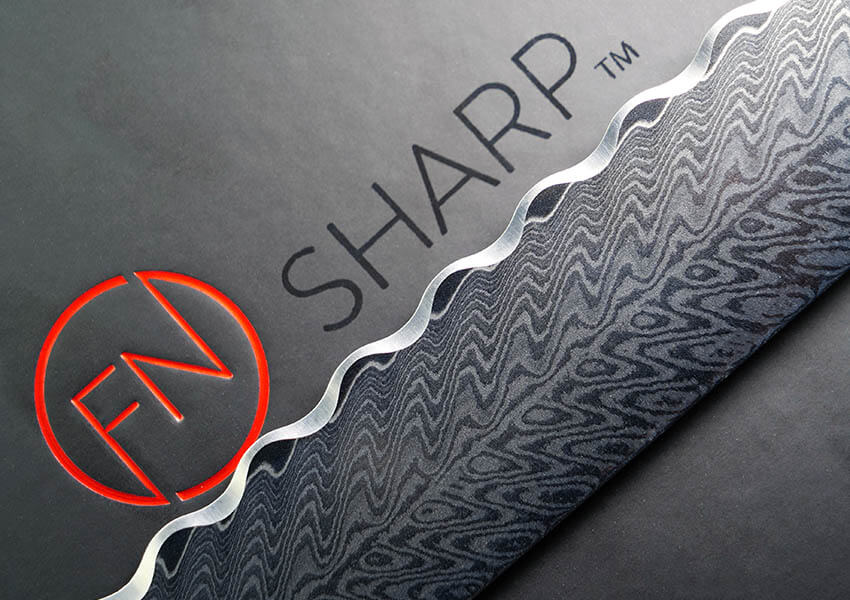
True Damascus patterns are formed when carbon trace elements form visible swirls in the steel mix that change properties when work hardened forged. In my view random patterns seem to look best with at least 200 layers.

A press of 20 to 30-tonne capacity will normally suffice.
How to make damascus patterns. Using a press is a very practical way to make damascus although not the fastest. A press of 20 to 30-tonne capacity will normally suffice. I have made a press specifically for damascus although a standard H-frame press can be used.
The steel can be drawn out using flat or drawing dies and taking bites at the billet. Even feather patterns can be created. Picture below In general I would personally lump all the patterns made by grinding out layers into one pot and refer to them as grinding damask.
But its just my personal name for it. Otherwise you would have to give every pattern on which the cut was a. True Damascus patterns are formed when carbon trace elements form visible swirls in the steel mix that change properties when work hardened forged.
Damascus Patterns Before and After. To help you plan your projects weve compiled some before and after photos to show you how a pattern transforms from the raw billet to the finished product. If youve worked with Vegas Forge Damascus steel or Mokume Gane wed.
I would like to organize a sort of Welded Damascus Library. Unfortunately Ive only done one twist and dont even have pictures of it. If you pattern weld and would like to share your knowledge please post a picture and a brief description of how the particular pattern is achieved.
I mix mine 1 cup FC 1 cup distilled water and 1 cup white vinegar. Some use 1 FC to 2 water. One of the most distinctive and intricate patterns of Damascus steel is the feathered pattern.
Feathering is created by welding several pieces of steel together creating a single billet making sure to weld the edges to form the important W in the steel layers. The basic processes always remain the same. The heating treatment for Damascus steel involves a preset temperature between 1500F and 2000F depending on the banding and a mixture of both cementite and austerntite.
Preset furnace temperature accordingly. Set metal block in the furnace. The feather pattern has always caught my eye.
Ive never done it before let alone much of any damascus so this will most definitely be a first for me. Unfortunately its in my nature to make giant leaps instead of baby steps most of the time so thats why I chose this over the much simpler patterns. This video is the second in an ongoing series in which knifemaker Walter Sorrells demonstrates how to make Damascus steel.
Damascus steel – also known as. My name is Kyle Royer I am a master BladeSmith. This is an in depth tutorial on how to make a twist damascus pattern.
I am teaching Bob Earhar. Damascus steel when ground down should look just like one solid piece of metal. In order to get the pattern you need to etch the steel with an acid.
There are several options as far as acids go but personally I use. Im not going to cover how to make damascus steel theres lots of information online and its pretty simple. Essentially you forge weld 2 contrasting types of steel I used 15N20 and 75Ni8 then manipulate it to make a pattern.
I did a simple twist as I like the way it looks. Then etch it to make the pattern. Jan 19 2021 - Explore Desert Moons board Damascus patterns followed by 665 people on Pinterest.
See more ideas about knives and swords knife making damascus. Im finishing up a blade made from Alabama Damascus steel and Im wondering what a good method is to use to make the pattern really pop. Ive heard several techniques including bluing the blade then lightly sanding with something like 2000 grit sandpaper or doing 5 - 1 minute etchings and then lightly sand with 1500 grit between etchings.
The damascus pattern applied to the blade will also be a factor to be considered in the layer count. In my view random patterns seem to look best with at least 200 layers. Twist patterns do no need as many layers as twisting the bar tightens them.
Fifty to a-hundred-and-fifty layers work well to achieve a twist pattern.